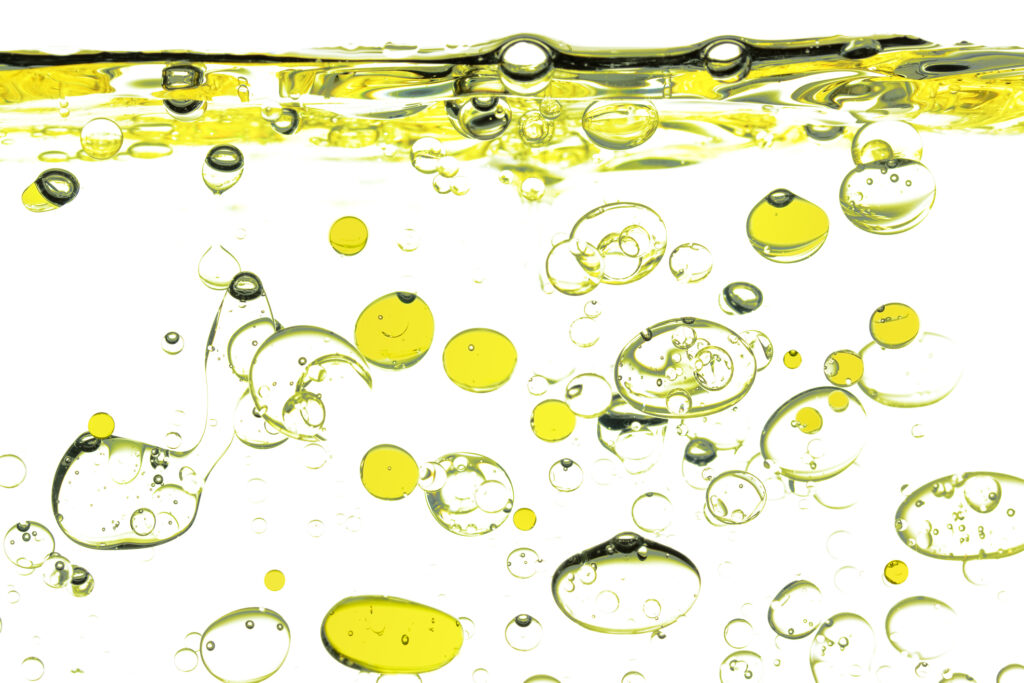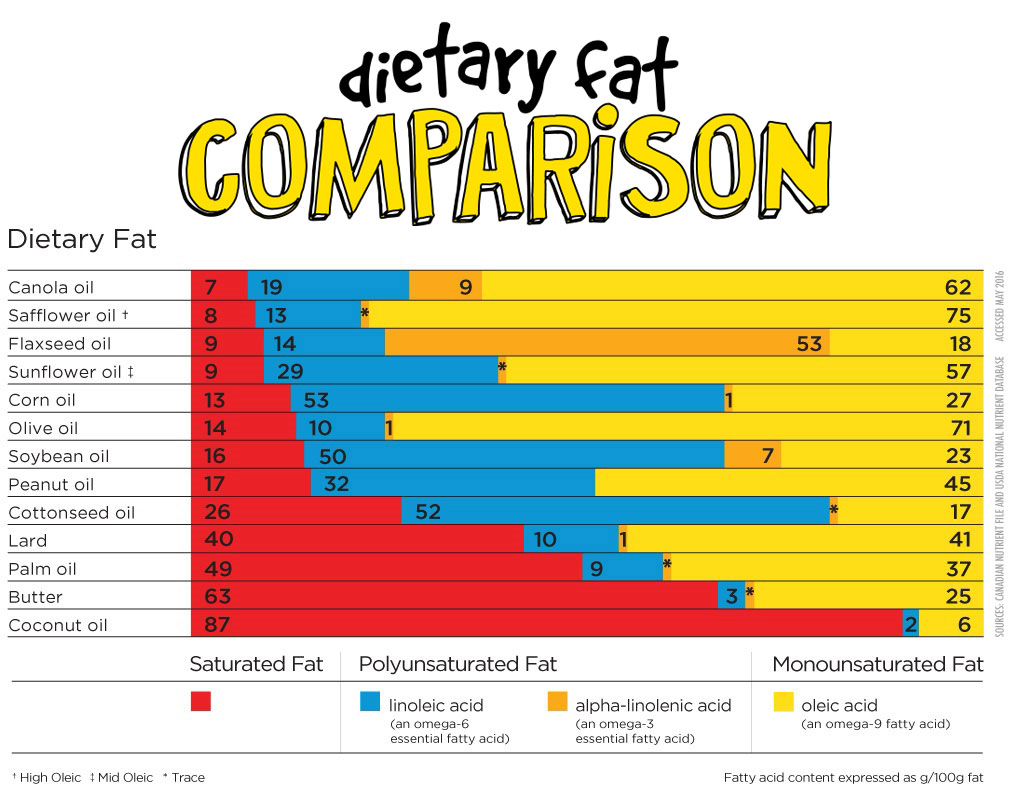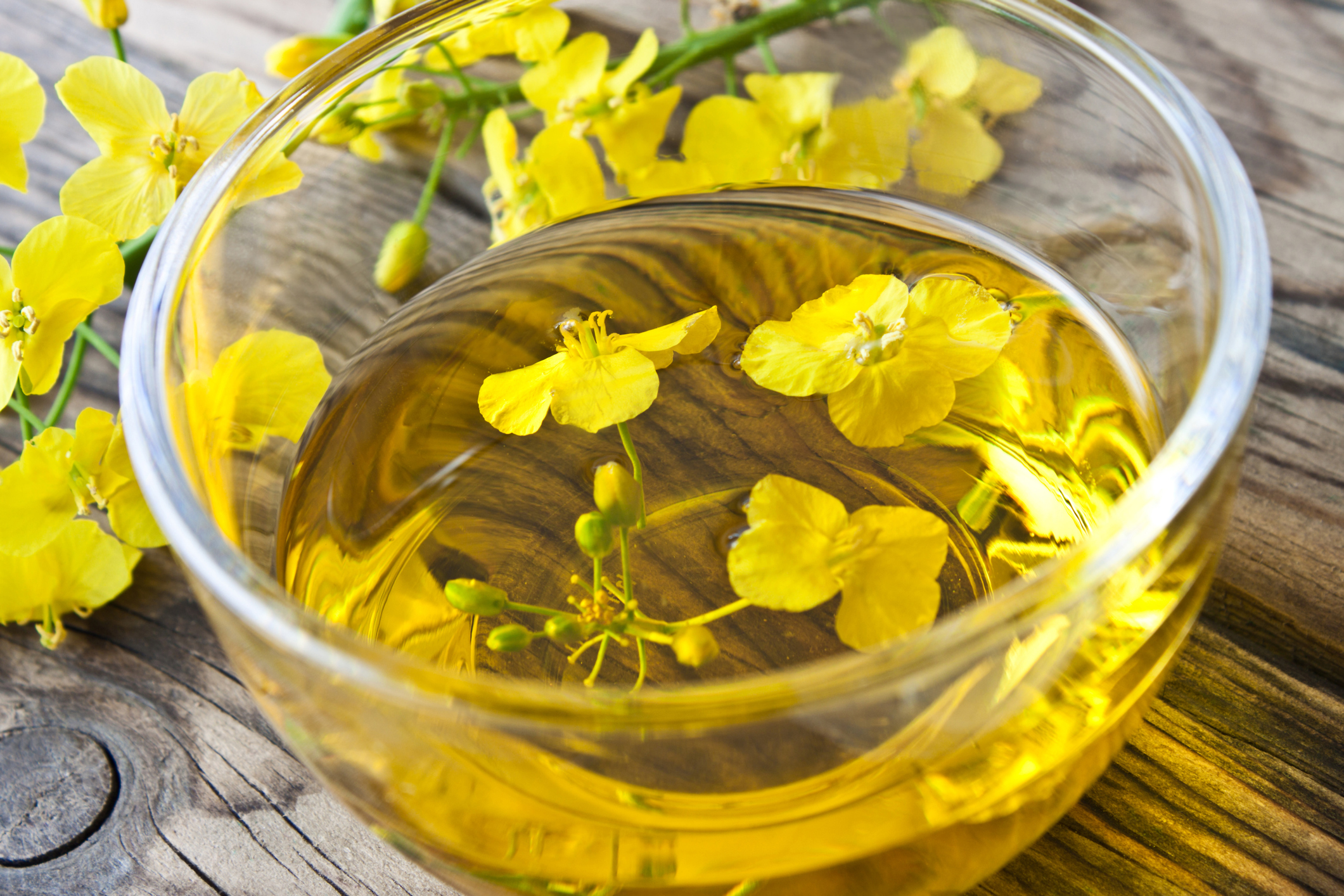
Our bodies use the fat we eat for all sorts of things. In fact, eating a small amount of fat is essential for life.
Fat is required for:
- The membrane structure of all human cells
- Human growth and development
- The absorption and storage of fat-soluble vitamins A, D, E and K
- Insulating and protecting our organs
Fat is also an excellent source of energy, and gram for gram packs in more than twice the energy as carbohydrates or protein.
And if that’s not enough, fat is key to our experience of enjoying food, by adding flavour and texture. A perfectly dressed salad? A moist chocolate birthday cake? A satisfyingly crisp french fry? Impossible without fat!
Categories of Fats
There are distinct categories of dietary fats, and each has a different structure and role in our bodies.
All fats are composed of smaller units called fatty acids, and each type of fat is made up of a unique combination of those fatty acids.
Although some foods may be known for their association with one type of fatty acid (butter and saturated fatty acids, for example), all foods contain a blend of them.
Saturated Fats
Saturated fats are typically solid at room temperature since their chemical structure allows the fatty acids to be packed together tightly. Examples of fats with higher amounts of saturated fatty acids include butter, coconut oil and animal fats, like lard. Foods that are high in saturated fat may include dairy products, high-fat meats, and baked goods like pastries, cookies, and biscuits.
Trans Fats
Trans fatty acids are a type of unsaturated fatty acid that are solid at room temperature, like saturated fats. Small quantities of trans fats are found naturally in meat and dairy products. Trans fats can also be artificially created through a process called hydrogenation, which transforms liquid oil to solid fat. Health Canada has banned artificial trans fats due to their association with coronary heart disease.
Unsaturated Fats
Unsaturated fats include fatty acids that tend to have a bend in their chemical structure, which means they can’t pack together as tightly, making them liquid at room temperature. There are two types of unsaturated fatty acids: monounsaturated fatty acids (MUFAs) and polyunsaturated fatty acids (PUFAs).
Monounsaturated Fats
MUFAs are found in both plant and animal foods. Foods with higher MUFA content include plant-derived oils like canola oil, avocados, olives, nuts, and nut butters, and seeds. Animal-derived MUFAs are found in meats, fish, and dairy foods like yogurt and milk.
Research shows that MUFAs may have a positive impact on cardiovascular health when they replace saturated and trans fats in the diet. Positive effects include lowering LDL (“bad”) cholesterol while maintaining HDL (“good”) cholesterol and improving blood vessel function.
Polyunsaturated Fats
PUFAs come in a variety of configurations and include omega-3 and omega-6 fatty acids.
Omega-3s come from plant sources like canola, flaxseed, chia seed, and walnuts. They can also be found in cold-water fatty fish like salmon, sardines, and mackerel.
Sources of omega-6 fatty acids include vegetable oils, nuts, and seeds, along with meat and eggs.
PUFAs are associated with lowering blood pressure and helping to reduce total and LDL cholesterol, which is linked to lower rates of cardiovascular diseases like heart attacks and strokes.
When it comes to eating fat, Health Canada Recommends:
Choose foods that contain mostly MUFAs and PUFAs instead of foods that contain mostly saturated fat to help lower your risk of heart disease.

Sources:
- Specific Dietary Fat in Relation to Total and Cause-Specific Mortality https://www.ncbi.nlm.nih.gov/pmc/articles/PMC5123772/
- Intake of individual saturated fatty acids and risk of coronary heart disease in US men and women: two prospective longitudinal cohort studies https://www.ncbi.nlm.nih.gov/pmc/articles/PMC5121105/
- Major types of dietary fat and risk of coronary heart disease: a pooled analysis of 11 cohort studies
https://pubmed.ncbi.nlm.nih.gov/19211817/




